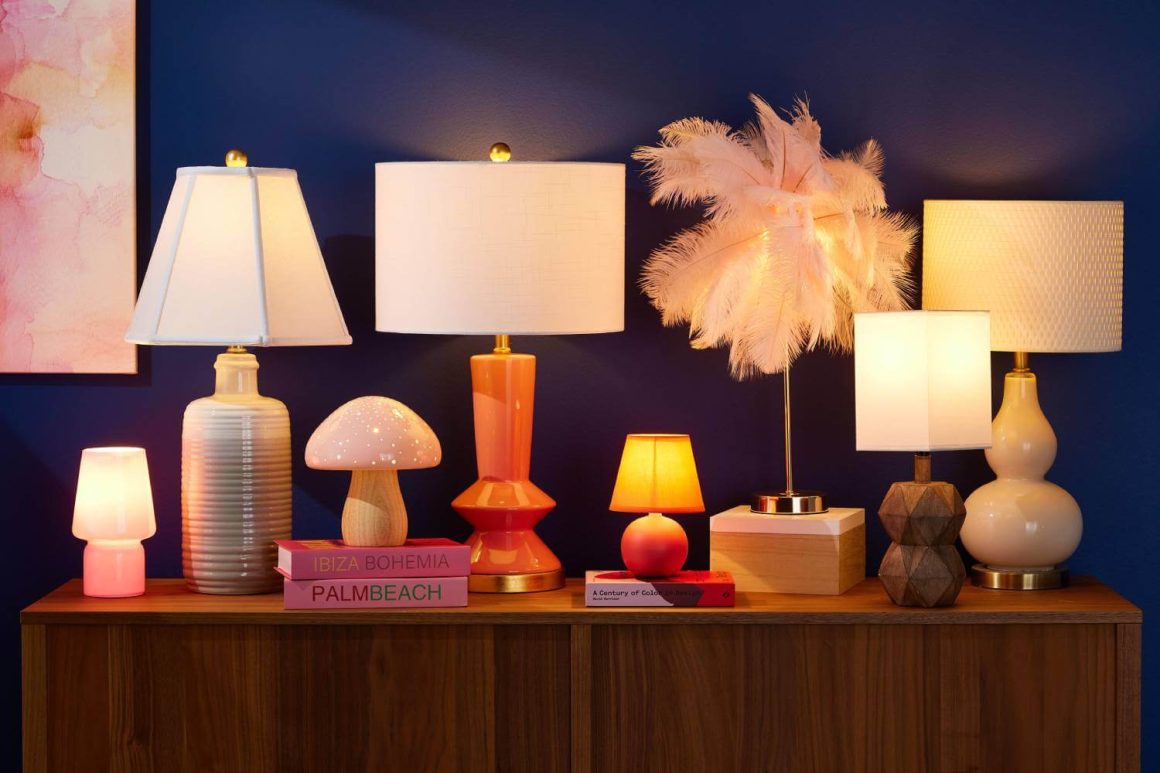A thoughtfully selected lampshade does more than soften light, it shapes the ambiance, reflects your design style, and effortlessly elevates a room from ordinary to exceptional. Whether refreshing a tired old fixture or styling a brand‑new lamp, understanding the wide world of lampshade shapes, materials, and design possibilities is key. In this guide, you’ll discover how to pick the perfect shade for every lamp base, explore on‑trend fabrics and eco‑friendly options, and unlock easy DIY projects that let you inject personal flair into your lighting.
Understanding Lampshade Shapes & Light Distribution
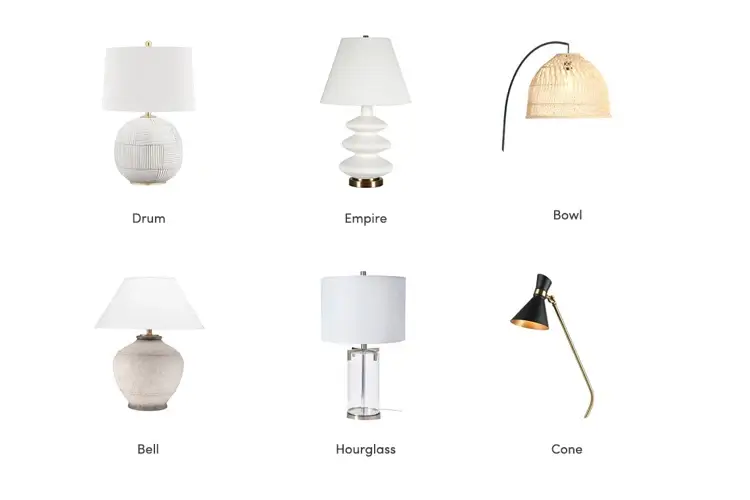
Every lampshade silhouette creates a distinct light pattern. Learn to harness these nuances for the perfect ambiance.
1. Empire & Bell Silhouettes
- Empire: Narrow at the top, wider at the base. By focusing downward light, Empire Shades excels over reading lamps and bedside tables. They cast minimal glare upward, keeping ceilings darker and spotlighting surfaces below.
- Bell: Characterized by gracefully flared, curved sides, bell shades softly diffuse light in all directions. Their organic shape channels a gentle ambient glow upward and outward, making them ideal for living rooms and entryways.
2. Drum & Cylinder Styles
- Drum: With straight sides and equal diameters at the top and bottom, drum shades offer balanced up‑and‑down illumination. They’re perfect for modern or minimalist spaces, creating an even light wash without harsh shadows.
- Cylinder: Similar to drums but taller relative to diameter, cylinders emphasize verticality. They work beautifully on floor lamps or taller table lamps, providing a concentrated beam downward while still allowing some ambient light.
3. Geometric, Novelty & Sculptural
- Rectangular & Hexagonal: Architectural shapes that play well with mid‑century and industrial decor. Rectangular shades align with boxy bases, while hexagonal or pagoda silhouettes embody traditional Asian influences.
- Novelty: Whimsical forms—animal cutouts, cloud‑shaped or abstract sculptures become instant conversation pieces. Perfect for children’s rooms, creative studios, or any space craving playful flair.
4. Pendant, Dome & Directional
- Pendant (Dome/Bowl): Point light downward, which makes it perfect for focused task areas such as kitchen islands, dining tables, or workspaces. Material choices (glass, metal, concrete) influence reflected vs. transmitted light and decorative shadow patterns.
- Directional & Articulated: Adjustable goosenecks and swivel heads let you aim light precisely. Use these for artwork accentuation or focused reading light, reducing spill and optimizing task illumination.
Materials in Depth: Pros, Cons & Effects
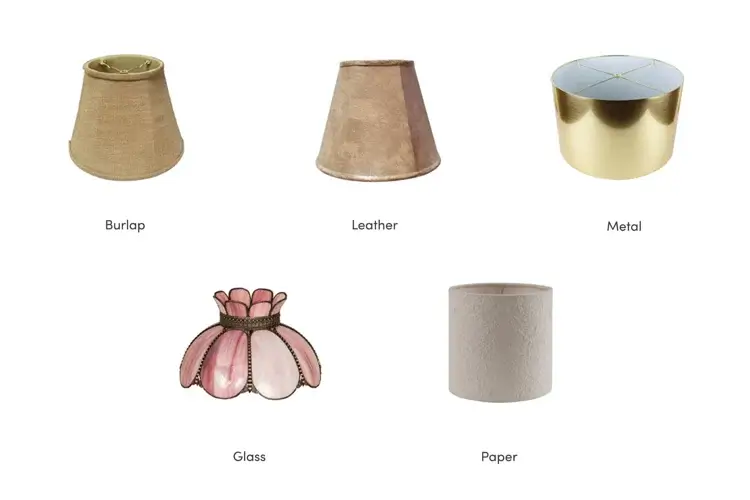
Material choice dictates translucency, texture, style, and maintenance. Here’s a closer look:
1. Natural Fabrics
- Cotton & Linen: Affordable, breathable, and easy to clean. They filter light softly, creating an inviting glow. Best for casual, coastal, Scandinavian, and farmhouse themes.
- Silk & Satin: Luxurious with a delicate sheen. Silk drapes beautifully and imparts an upscale feel ideal for formal living rooms and elegant bedrooms. Requires gentle handling and dry cleaning.
- Velvet & Brocade: Plush and indulgent, these fabrics absorb some light, resulting in a more intimate, low‑glare atmosphere which is perfect for reading corners, libraries, or moody lounges.
2. Paper, Parchment & Rice Paper
- White Paper: Crisp, modern, budget‑friendly, and easy to change out seasonally. It casts a crisp, cool‑white glow.
- Parchment: Translucent with warm amber undertones, parchment evokes old‑world charm and pairs well with rustic or vintage decor.
- Rice Paper (Washi): Lightweight, slightly textured, and available in patterns. Creates a soft, diffused light with subtle shadow play.
3. Natural Wovens
- Rattan, Wicker, Bamboo: Bohemian, coastal, or tropical vibes. These shades cast intricate patterns of light and shadow, adding a layer of visual interest. They’re breathable but require careful dusting to prevent fiber brittleness.
- Artisanal Willow & Seagrass: Hand‑woven by craftspeople. Each shade is unique, with natural color variations and slight irregularities that enhance organic appeal.
4. Glass, Metal, Acrylic & Ceramic
- Glass: From sleek opal globes to stained‑glass Tiffany mosaics, glass shades refract and soften light beautifully. Opal variants provide a uniform wash, while textured glass creates decorative sparkle and diffusion.
- Metal: Brass, copper, and steel solid metals block light in unwanted directions, directing illumination precisely. Interior finishes (reflective vs. matte) alter brightness.
- Acrylic: Lightweight, shatter‑resistant, and cost‑effective. It is ideal for high‑traffic areas or children’s rooms.
- Ceramic & Porcelain: Heavier, sculptural, and art‑forward. Unlit, they double as decorative objects; lit, they produce a soft downlight.
5. Sustainable & Unconventional
- Recycled Materials: Paper pulp, reclaimed wood veneer, or 3D‑printed bioplastics reduce environmental impact.
- Upcycled Textiles: Vintage scarves, lace, film slides, or map fragments—each shade tells a story. Layer trims, embroidery, or decoupage for narrative depth.
Shade Fittings, Hardware & Safety
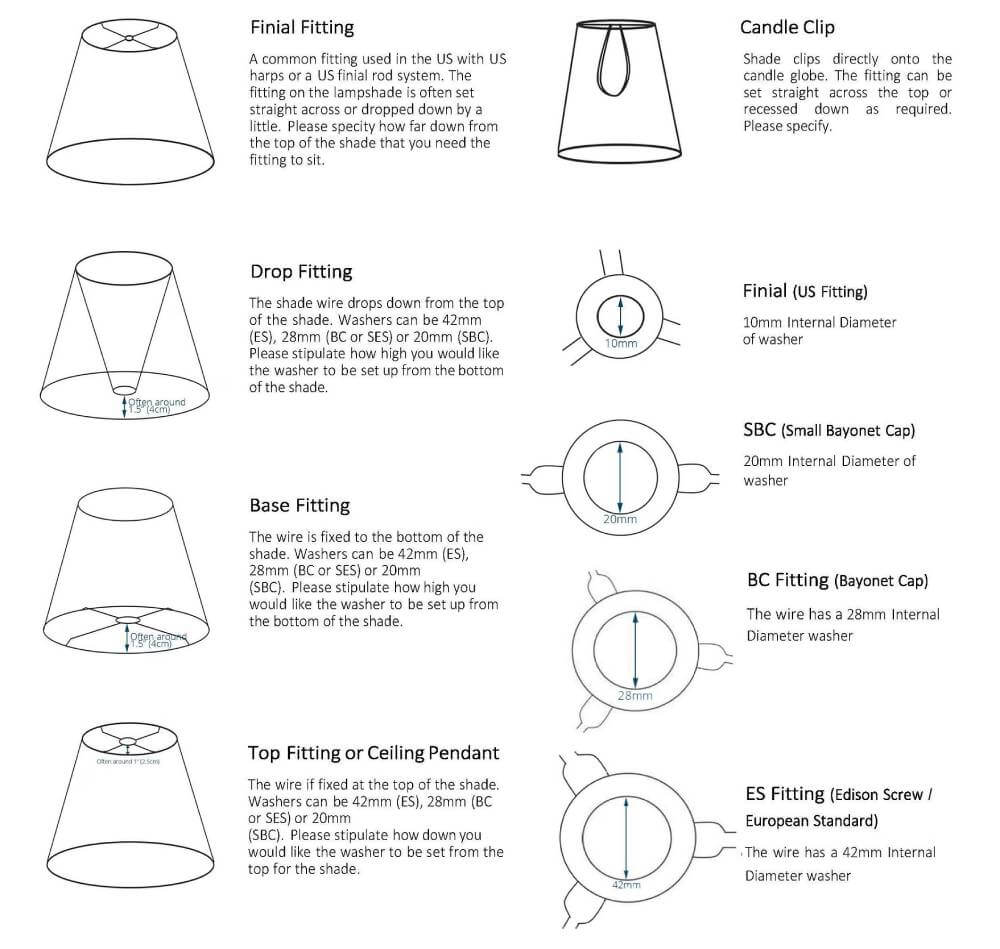
Understanding fittings ensures a secure, steady shade and prevents accidents.
1. Fitter Types
- Spider Fitter: The most common. A spider bracket sits atop a harp (wireframe). Fastened by a finial.
- Uno Fitter: An internal ring sits directly on the lamp’s socket. No harp needed—cleaner look on desk lamps.
- Clip‑On: Clips onto a bulb’s shoulder. Easiest for small lamps; not recommended for heat‑sensitive materials.
2. Harps, Hubs & Rings
- Harp Height: Choose a harp that positions the shade’s top about ½” below the bulb to avoid glare.
- Socket Hubs & Rings: Ensure compatibility between your shade’s fitter diameter and the lamp’s hardware. Common sizes: 1.5″–2″ inner diameter for uno, 4.5″–6″ for spider.
3. Safety Tips
- Use low‑heat LED bulbs to prevent scorching, warping, or fire hazards.
- Maintain ½” clearance between shade material and bulb.
- Secure all fittings and check periodically for loosened hardware.
Matching Shades to Your Decor & Color Theory
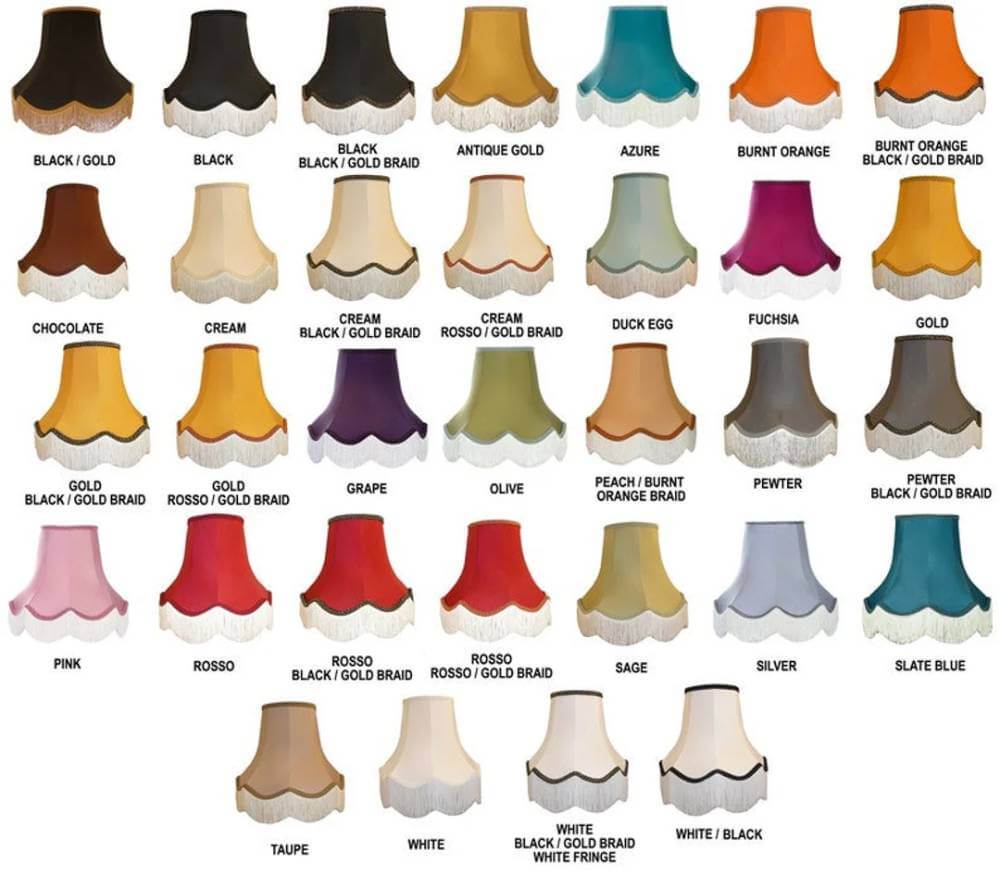
A shade should feel like a natural extension of your space, not an afterthought.
1. Shape & Base Harmony
- Round Bases: Classic round or drum shades. Creates a cohesive, balanced silhouette.
- Square or Geometric Bases: Square, rectangular, or hexagonal shades emphasize architectural lines.
2. Color & Pattern Coordination
- Neutral Palettes: Shades in white, ivory, gray, or black offer timeless, understated elegance and blend effortlessly with any wall color or furniture style.
- Bold & Printed Shades: Florals, geometrics, or abstract patterns bring energy. It anchors accent colors in pillows, rugs, or artwork.
- Texture Layers: Linen, linen‑weave, basketweave, or pleated textures add depth without overwhelming.
3. Zone Lighting & Layering
- Combine ambient overhead fixtures, task lamps with directional shades, and accent lighting behind or beneath shades for layered functionality and mood control.
Scale, Proportion & Lighting Quality
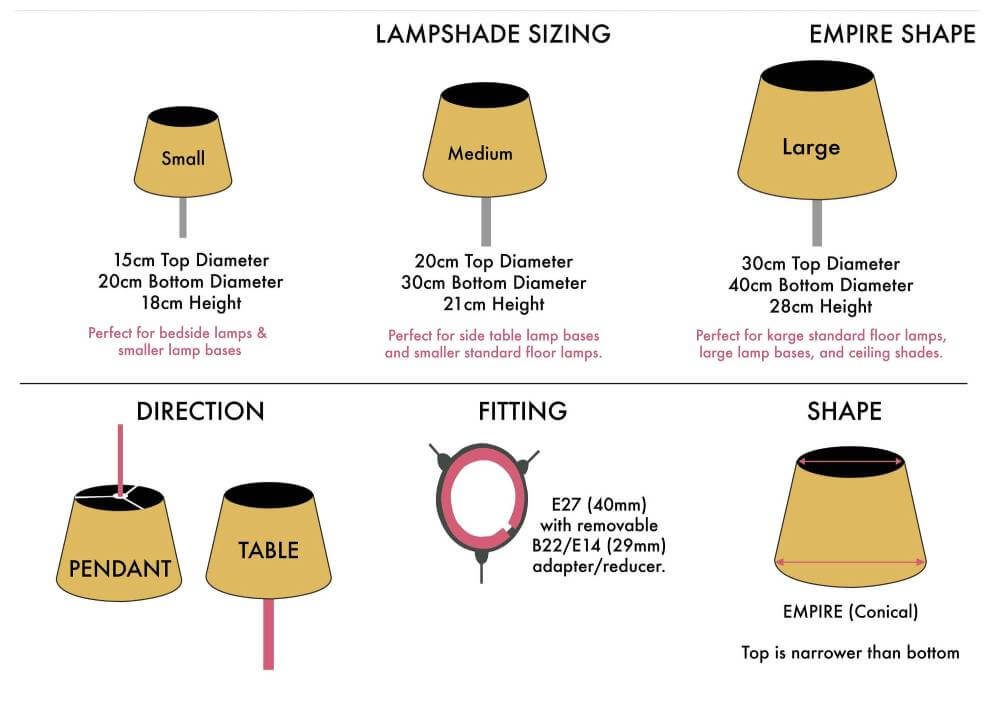
Proper sizing ensures both aesthetics and performance.
1. Proportion Guidelines
- Diameter: At least twice the width of the lamp base.
- Height: Approximately two‑thirds of the total lamp height. Taller shades elongate lamps; shorter ones feel squat.
- Clearance: Leave ½”–1″ between the bulb and shade interior for air circulation.
2. Light Diffusion vs. Directional Focus
- Ambient Light: Translucent fabrics or glass create a soft, even glow.
- Task Light: Opaque metals and papers concentrate light downward. Ideal for reading, cooking, or crafting.
3. Bulb Choices & Color Temperature
- LED: Low heat, energy‑efficient, long lifespan.
- Color Temperature:
- Warm White (2700–3000K): Cozy, intimate—bedrooms and living rooms.
- Cool White (3500–4000K): Crisp, energetic—kitchens, home offices.
- Daylight (5000K+): High clarity—workshops, garages.
Creative DIY & Custom Lampshade Projects
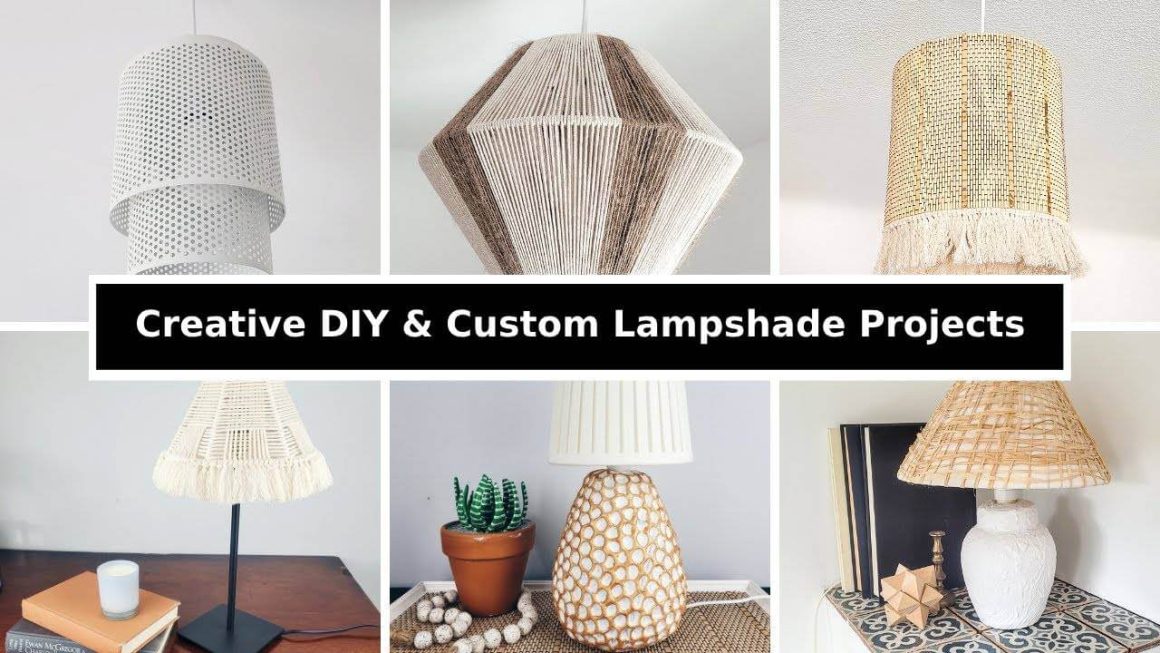
Transform a simple shade into a feature piece with these hands‑on tutorials.
1. Decoupage Wallpaper or Vintage Maps
- Materials: Plain paper shade, wallpaper scraps or vintage maps, decoupage medium, bristle brush.
- Steps:
- Clean shade surface.
- Cut paper into overlapping panels.
- Apply decoupage medium to shade, press paper in place, and smooth air bubbles.
- Seal the entire surface with two coats of varnish.
- Time & Cost: 2–3 hours; under $30 total.
2. Lace Overlay & Ribbon Trim
- Materials: Sheer lace fabric, ribbon, hot glue gun, scissors.
- Steps:
- Wrap lace around the shade and secure edges inside with hot glue.
- Adorn top and bottom rims with ribbon, hiding raw lace edges.
- Result: Romantic “shabby‑chic” look, perfect for bedrooms or nurseries.
3. Film Slide Memory Shade
- Materials: 35mm film slides, clear fishing line, metal hoop shade frame.
- Steps:
- Thread fishing line through slide sprocket holes.
- Tie each slide around the frame at even intervals.
- Trim excess line.
- Effect: Colorful projections of your memories onto walls—ideal for media rooms.
4. Crochet Sleeve or Raffia Wrap
- Crochet: Use bulky yarn to crochet a sleeve that slips over the shade and adds warmth and texture.
- Raffia: Tightly wrap natural raffia around the shade frame knotting or gluing the ends brings coastal, boho flair.
2025 Trends & Eco‑Friendly Lampshade Innovations

Stay ahead with this year’s hottest shades and sustainable solutions.
- Pleated Revival: Budget‑friendly pleated shades in soft neutrals and jewel tones, borrowing from mid‑century fashion.
- 3D‑Printed Geometrics: Complex lattice structures impossible by hand, available in biodegradable PLA.
- Smart Shades: Integrated RGB LEDs or filament bands that shift color on command, controlled via app or voice.
- Plant Fiber Blends: Hybrid shades combining hemp, jute, and recycled cotton for strength, texture, and a smaller carbon footprint.
Care, Maintenance & Troubleshooting
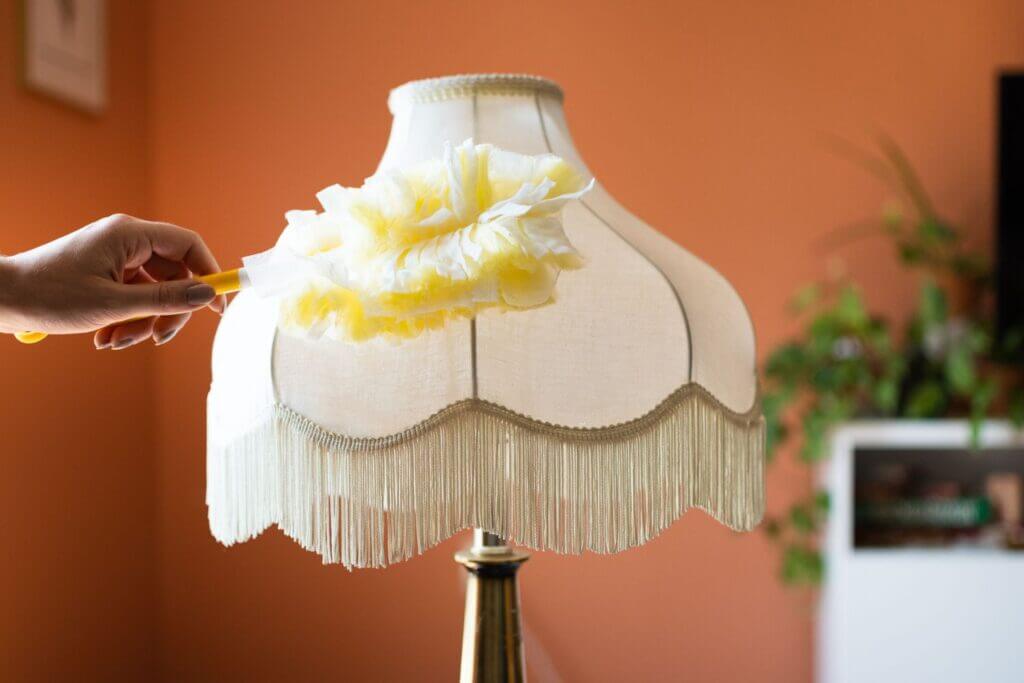
Keep your shades looking fresh and extend their lifespan.
1. Routine Cleaning
- Weekly Dusting: Soft brush attachment or microfiber cloth.
- Monthly Inspection: Check seams, trims, and hardware.
2. Deep Cleaning
- Fabric: Remove shade, soak (if washable) in a mild detergent, air‑dry flat. For non‑washable, spot‑clean with foam upholstery cleaner.
- Paper & Parchment: Gently vacuum, and avoid moisture.
- Woven: Soft‑bristle brush only, moisture can cause warping.
- Glass/Metal/Ceramic: Wipe with a damp cloth and mild soap, and dry immediately to prevent rust or water spots.
3. Repair & Replacement
- Loose Trims: Should be reattached with fabric glue or sewed by hand.
- Tears & Rips: Patch from inside with fabric scraps and adhesive, then re-cover trim.
- When to Replace: Yellowing, brittleness, or sagging are signs that materials have aged and should be swapped for safety and aesthetics.
Select a shade silhouette that complements your lamp base and the room’s style. Round or drum shades pair best with circular bases and minimalist decor, providing balanced up‑and‑down light. Empire and bell shapes work well on traditional or transitional bases, focusing light downward for reading nooks. Geometric (square, hexagonal) and novelty shapes add architectural or playful flair to modern and eclectic spaces. Consider scale: the shade’s widest diameter should be roughly twice the base width and two‑thirds of the lamp’s total height.
Choose materials based on desired light diffusion, aesthetics, and durability.
1. Natural fabrics (cotton, linen) filter a soft ambient glow ideal for living rooms and bedrooms.
2. Silk and velvet add luxury and luxe textures to formal spaces.
3. Paper, parchment, and rice paper offer budget‑friendly, warm, or neutral diffusion for casual or temporary decor.
4. Woven fibers (rattan, bamboo) cast decorative shadows in bohemian and coastal rooms.
5. Glass, metal, and acrylic provide precise task lighting or shatter resistance in kitchens and kids’ areas.
Accurate measurements ensure both style and safety.
1. Shade Height: Measure from the top edge to the bottom edge.
2. Top & Bottom Diameters: Measure across the shade’s widest points at both top and bottom.
3. Fitter Size: For spider fittings, measure the inner ring diameter (commonly 4½–6″); for uno fittings, measure the socket ring (1½–2″).
4. Aim for a bottom diameter at least twice the base width and a height that’s approximately two‑thirds of the lamp’s total height.
1. Fabric Shades: Dust weekly with a soft cloth or vacuum brush. For stains, spot‑clean with mild detergent and water, then air‑dry.
2. Paper/Parchment: Gently vacuum; avoid moisture to prevent warping or discoloration.
3. Woven Shades: Use a soft‑bristle brush to remove dust and avoid high humidity.
4. Glass/Metal/Ceramic: Wipe with a damp cloth and mild soap, then dry immediately to avoid rust or water spots.
5. Replace shades showing yellowing, tears, or brittleness for safety and optimal light quality.
Absolutely! Simple, high‑impact DIYs include:
1. Decoupage Wallpaper/Maps: Affix patterned paper with decoupage medium, then seal with varnish.
2. Lace Overlay & Ribbon Trim: Wrap lace around the shade, secure with hot glue, and hide edges with decorative ribbon.
3. Film‑Slide Shade: Thread vintage 35 mm slides on fishing line around a wire frame for colorful projections.
4. Crochet or Raffia Wrap: Slip on a crocheted yarn cover or tightly wrap natural raffia for a boho‑chic texture.
5. These projects cost under $30 and take just a few hours to personalize any lamp.
Conclusion
Selecting the ideal lampshade is both an art and a science, one that combines shape, material, scale, and personal expression. By mastering shape, material, scale, and personal touches, you can curate lampshades that not only illuminate but also inspire. From timeless empire silhouettes and luxurious silk finishes to upcycled DIY creations, the right shade will elevate every lamp into a design highlight. Now that you’re armed with expert tips and creative ideas, go ahead and brighten your home and your mood with the perfect lampshade.
Ready to find your perfect shade? Explore local lighting boutiques, scour online artisan marketplaces, or dive into a weekend DIY project, and then share your transformation with us using #ShadeStyleMagic!
